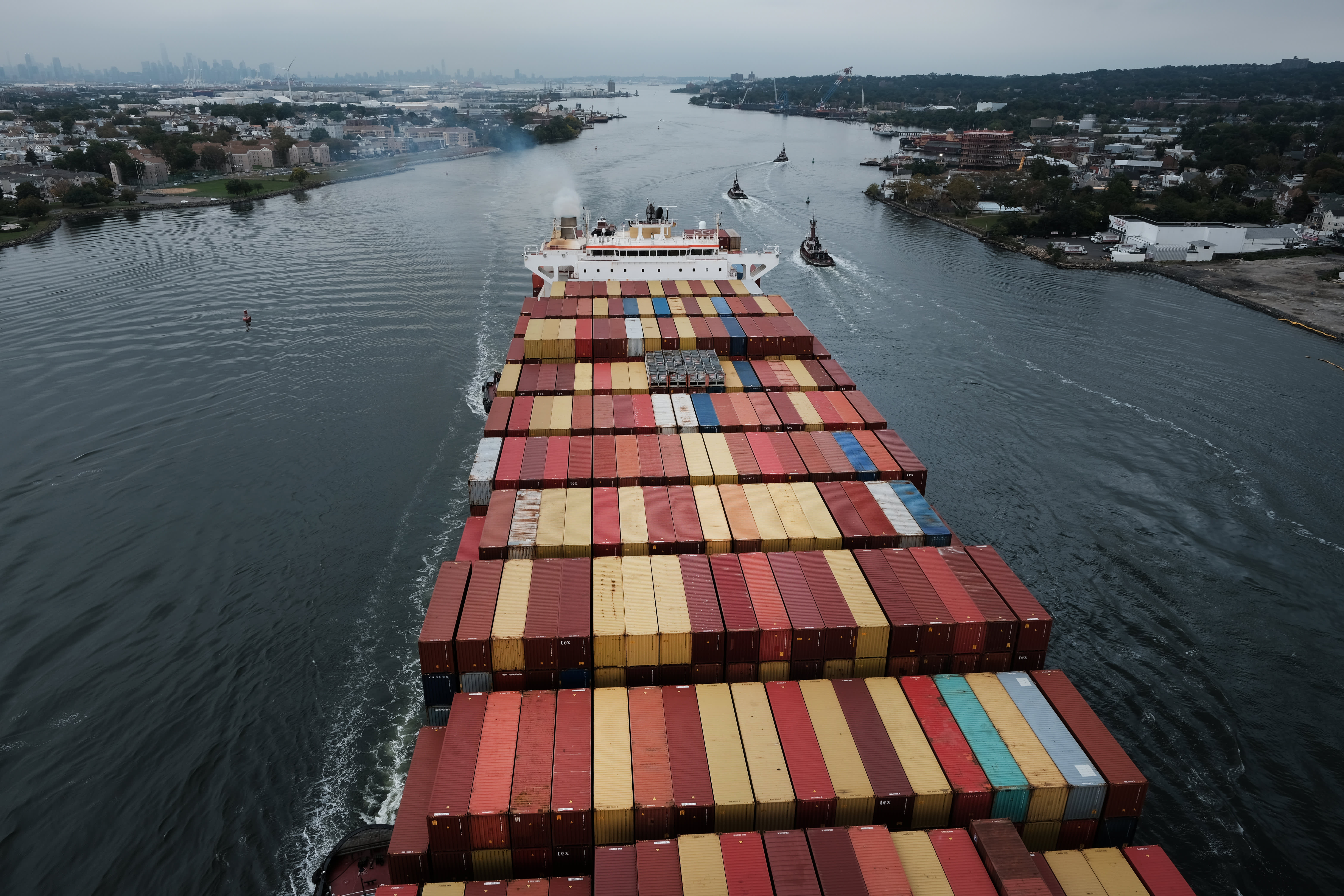WASHINGTON – President Joe Biden is expected to spotlight disruptions in the global supply chain and surging energy prices when he meets this weekend with fellow leaders of the world’s largest economies.
On Saturday, Biden will attend the annual forum of the “Group of 20,” or G20, referring to the 20 major economies that account for more than 80% of world GDP and 75% of global trade.
Speaking to reporters on Air Force One en route to Rome, national security adviser Jake Sullivan said Biden is slated to convene a supply chain meeting with world leaders. The plan is to discuss ways in which governments can alleviate pressure points in the global trading system.
“The global economy is obviously going to be front and center because the pandemic is continuing to have an impact on economic recovery,” explained Howard Stoffer, University of New Haven professor of International Affairs. “How countries respond in a coordinated way or independently is going to be an important issue at the G20,” he added.
The world’s supply chain – already disrupted by the pandemic – is continuing to bear the brunt of surging consumer demand, labor shortages and overseas manufacturing delays, which has led to higher transportation costs and inflation.
Global supply chain challenges “will be an initiative very high on the agenda,” explained Michael Froman, vice chairman and president of strategic growth at Mastercard.
Froman, who served for four years as President Barack Obama’s trade representative, added that Biden will have the opportunity to lead discussions without sharing the stage with Chinese President Xi Jinping or Russian President Vladimir Putin, who will not be present.
“Not only is the U.S. back at the table, but one of Biden’s political strengths is engaging with leaders informally. He’s been involved in these kinds of informal discussions with leaders throughout his career in the Senate as well as as vice president and now president. With two of the other major leaders not attending really shows that the U.S. is reasserting leadership and reasserting engagement in an effective way.”
Biden’s diplomatic choreography at the G20 summit in Rome, which went virtual last year, follows America’s shambolic exit from Afghanistan and a stunning diplomatic row with France, Washington’s oldest ally.
Biden has previously vowed to repair alliances through diplomacy and restore Washington’s leadership position on the global stage following years of “America First” policies pursued by his Republican predecessor, Donald Trump.
“The goal almost always with foreign travel for the president is to have people look at the leader of America, as the leader of the world. And that’s something Donald Trump had a very hard time doing,” explained Tom Block, Washington policy strategist at Fundstrat.
“He feels very comfortable dealing with foreign leaders, unlike president Trump, and for many years he chaired the Foreign Relations Committee in the Senate. So this is an area where he feels very comfortable and will be well briefed,” added Block, who previously served as global head of government relations for JP Morgan Chase.
“In the near-term, Biden wants to use the G20 to engage the leaders of some of the world’s most important states on addressing near-term economic challenges including supply-change disruptions and the ongoing effects of Covid,” explained Joshua Shifrinson, associate professor of International Relations at Boston University.
The White House has previously said that the administration continues to press on ways to address issues in the supply chain causing global commerce disruptions.
Earlier this month, in an effort to address the nation’s own supply chain issues, the Biden administration unveiled a plan to run operations 24/7 at the ports of Los Angeles and Long Beach, which account for 40% of sea freight entering the United States.
And while round-the-clock operations at the twin California ports are expected to alleviate the backlog of container ships, it’s far from solving the compounding issues impacting the global supply chain.
“All major ports around the world have to be 24/7,” argues Stoffer. “With exception of some national or religious holidays, all ports in the world can’t be nine to five.”
Awi Federgruen, a production and management expert and professor at Columbia University Business School in New York, says other pieces of the supply chain need to be addressed as well.
“It’s not just fixing the ports, that’s one component in a very long supply chain,” Federgruen said, noting labor shortages in the trucking and warehousing industries.
“Extending the working hours of the ports in California by some 60 hours, and then shaving off 25% of the unloading time will not be the savior of the entire problem. There are several factors that are compounded by each other,” Federgruen, who chairs Columbia Business School’s Decision, Risk and Operations division, told CNBC.
Earlier this week, the twin ports of Los Angeles and Long Beach announced new fines on carriers at the nation’s busiest port complex in order to abate the intensifying logjam of cargo ships.
Once loaded off vessels, containers moved by trucks will have nine days before fines start accruing. Containers scheduled to move by rail will have three days.
In accordance with these deadlines, carriers will be charged $100 for each lingering container per day starting Nov. 1.
